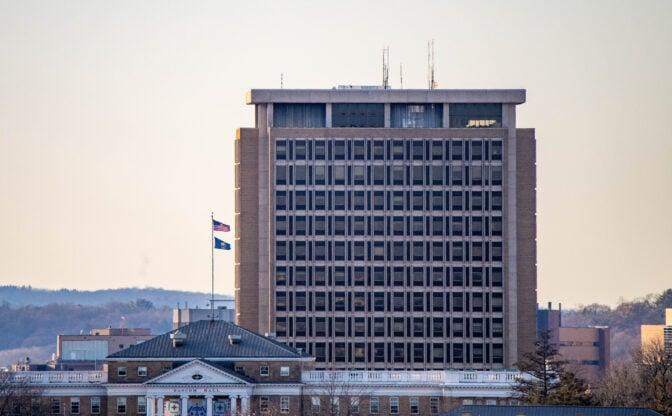In universities across America there has been an ongoing debate on how to handle buildings, statues, scholarships and other symbols that were named after individuals with murky pasts. Recently at the University of Wisconsin, the building Van Hise Hall has been involved in a similar controversy.
Van Hise Hall is named after Charles Van Hise, who was president of UW from 1903 through 1918 and the first recipient of a PhD from the university.
For the most part Van Hise’s presidency was very successful with many significant achievements. He played an integral part in the creation of the “Wisconsin Idea,” a philosophy emphasizing the university’s responsibility to serve the entire state, according a biography published by UW Libraries.
This is a core principle, which remains central to UW’s mission today, ensuring its findings and expertise benefit not just students, but all Wisconsin residents.
Despite these successes as president, Van Hise had severe faults in his past we cannot look past. Most importantly, Van Hise was a supporter and advocate of eugenics.
“Eugenics is selective breeding, often by forced sterilization to remove people of color, those with disabilities, and those who have been incarcerated or detained,” according to UW’s Diversity, Equity and Inclusion website. “Eugenics policy is considered racist, ableist, and associated with genocide.”
This history of eugenics at UW is not limited to Van Hise but is widespread in the history of the university, especially within the genetics department. At one point there was even a eugenics club at UW, founded by faculty from the genetics department.
It goes without saying that eugenics is not an acceptable practice and one we must condemn. In response to this history, the university launched a committee to research Van Hise’s past and what role he played regarding eugenic practices as well as the general history of eugenics at the university, according to UW’s DEI website.
UW decided in response to the facts brought to light to place a plaque on the building recognizing both that Van Hise was a eugenicist and the university’s historical role in eugenics, according to the Milwaukee Journal Sentinel. But is this enough? Should Van Hise Hall be renamed?
Proponents of renaming argue preserving the names of historical figures with problematic legacies perpetuates their glorification and erases the harm they caused. In contrast, opponents argue renaming buildings erases the historical impact of these figures, ignoring their positive contributions to the states and regions they’re recognized in.
First let’s look at what other universities have done when facing similar problems. One similar case to this is at Towson University in Maryland, according to Inside Higher Ed. Two residence halls at Towson were named after two founding fathers who were also slave owners. After public outcry, the university did not put up a plaque describing these men’s misdoings but instead renamed the buildings after the two first Black graduates of the university. Along with renaming, many universities have developed denaming policies, according to Inside Higher Ed.
For instance, the University of North Carolina-Chapel Hill has a denaming policy that states students can submit request to change certain building names, and these requests will be sent to administration to determine if they have merit, according to Inside Higher Ed. If the request does have merit, a committee is set up to investigate the historical past of that individual and make a recommendation to the president and the board if the building should be renamed.
This process is tedious, but allows students to have a direct input on how they impact their campus through the denaming and renaming of buildings.
UW does have a policy on how buildings’ names should be changed.
“The Board [of Regents] delegates authority to the Chancellor of the institution to remove or change the name of a portion of the facility, building or parcel of land if the name presents a risk to the institution’s reputation, if the donor or sponsor fails to meet the financial obligations or the naming, or as otherwise deemed necessary by the Chancellor,” the policy says.
The fact that the university has a policy for this process is good, but more work needs to be done. As stated before, many universities have a formal process for students to request for a building to be renamed — UW has no such process. This is a process that needs to be created to allow for students’ voices to be heard in large decisions like renaming a building to fit the community as a whole.
In the Van Hise Hall case specifically, the “correct answer” is still up in the air, but ultimately the final decision must be up to the Madison community as a whole, not just one individual like the chancellor.
The plaque itself appears to be performative activism, it does not accomplish any real goals in reconciling the university’s past and thus is not fully effective in solving the complaints of the Madison community relating Van Hise Hall. The university needs to actually recognize and reconcile the negative aspects of the university through meaningful actions and move forward to a more equitable campus future.
Charles Zumbrunnen ([email protected]) is a sophomore studying agricultural and applied economics.








